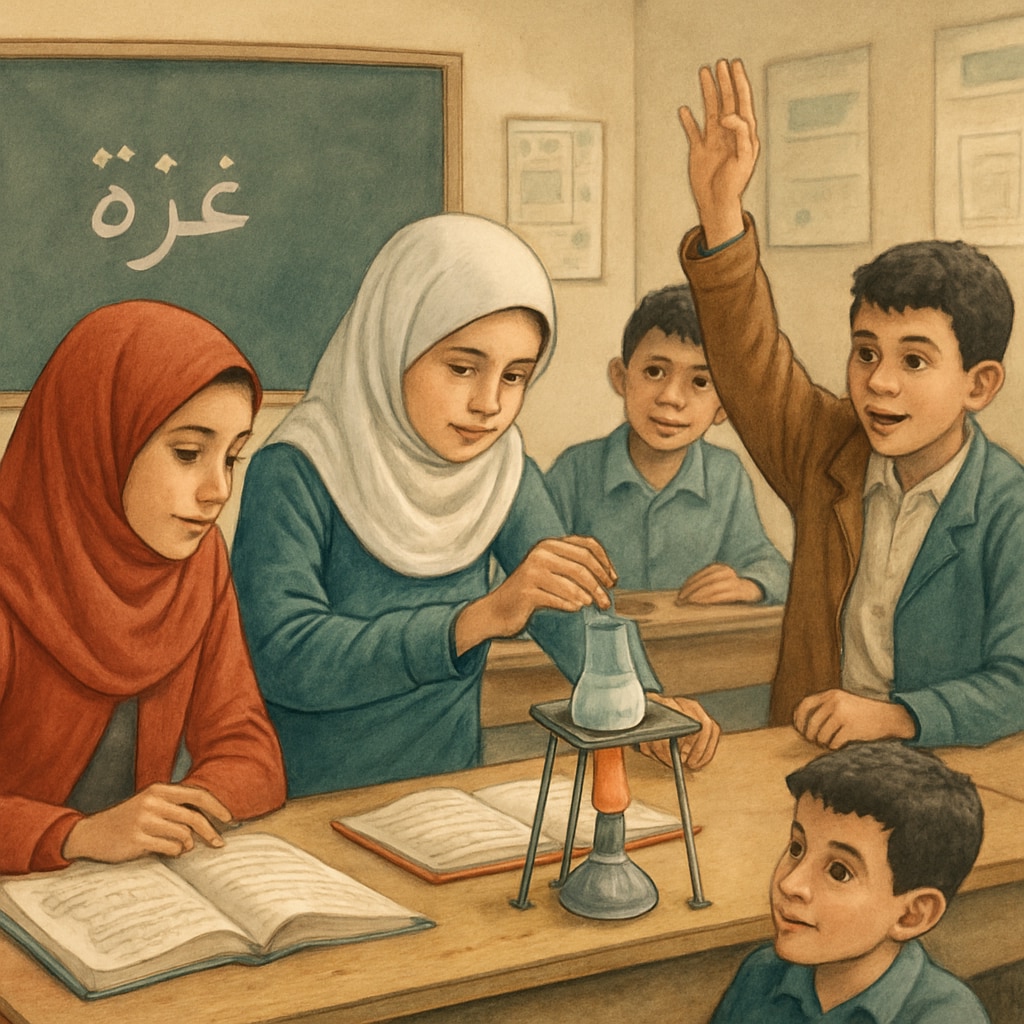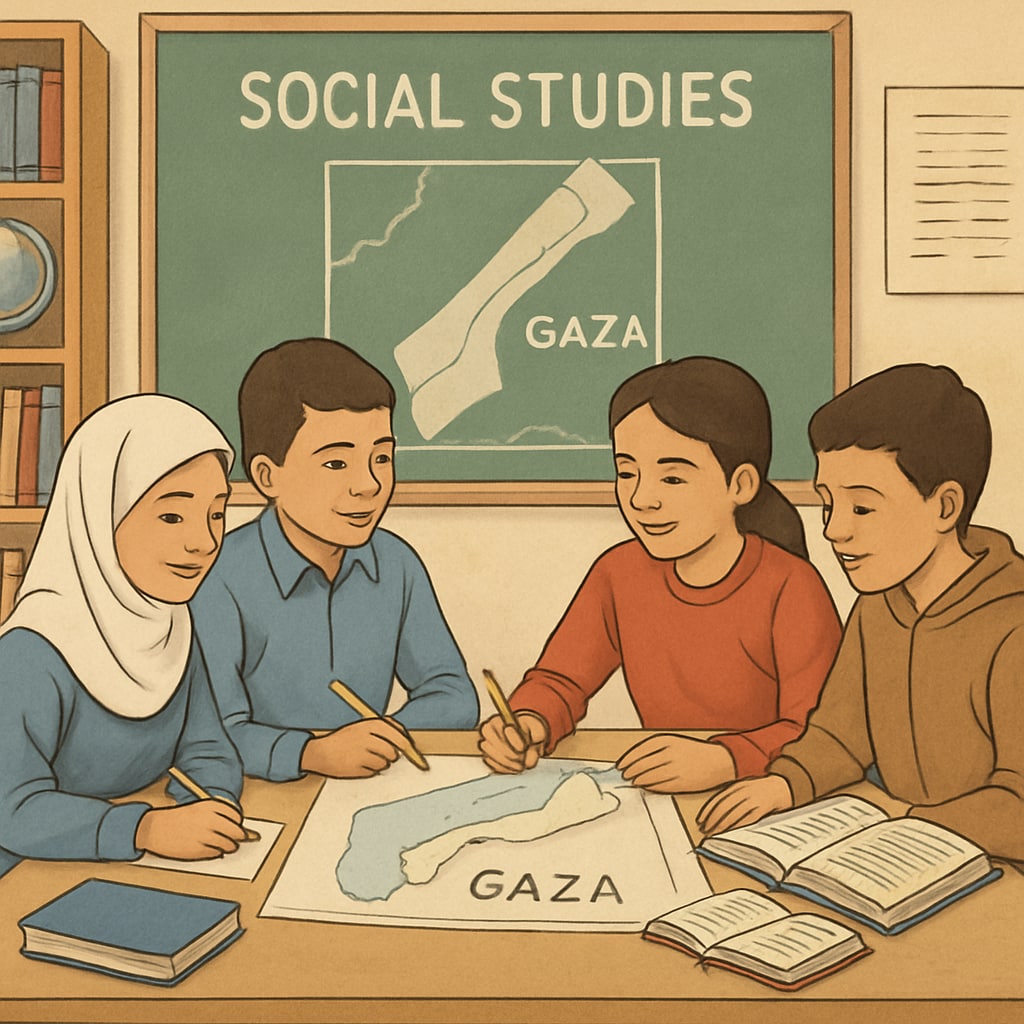Developing a robust teaching syllabus, particularly for science and social studies, is a cornerstone for rebuilding education in Gaza schools. In a region affected by prolonged conflict, the need for a well-planned curriculum goes beyond academics—it holds the potential to shape the future of a peaceful and knowledgeable society. This article explores the challenges and strategies involved in crafting a curriculum tailored to the unique needs of Gaza’s public schools.
Challenges in Developing a Curriculum for Gaza Schools
Creating a curriculum in a post-conflict environment like Gaza involves several challenges. The first hurdle is addressing the lack of educational infrastructure. Schools often operate with limited resources, including textbooks, laboratory equipment, and access to modern teaching tools. As a result, a curriculum must be designed to function effectively even under such constraints.
Another significant challenge is ensuring the curriculum’s neutrality. Science and social studies are particularly sensitive subjects, as they can influence students’ understanding of the world and their role within it. For example, social studies must navigate historical and political topics carefully to avoid promoting division or bias. Similarly, science education should emphasize critical thinking and innovation, equipping students with skills that transcend political or geographical boundaries.

Key Components of a Balanced Curriculum
For a curriculum to succeed in Gaza schools, it must strike a balance between academic rigor and cultural sensitivity. Here are the essential components:
- Inclusivity: The curriculum should respect the diverse cultural and social backgrounds of students while fostering a sense of unity.
- Critical Thinking: Both science and social studies should encourage analytical skills, helping students question assumptions and solve problems.
- Peace Education: Social studies can play a pivotal role in teaching conflict resolution, empathy, and the importance of coexistence.
- Practical Learning: Science curricula should include hands-on experiments to inspire curiosity and innovation, even if resources are limited.
By incorporating these elements, the curriculum can contribute to both individual growth and community resilience.
Steps to Implement the Curriculum
Implementation is as critical as design. The following steps can help ensure the curriculum’s success:
- Teacher Training: Educators must be equipped to deliver the curriculum effectively, with an emphasis on interactive and student-centered teaching methods.
- Community Involvement: Engaging parents and local leaders in the curriculum development process can foster trust and ensure the content aligns with community values.
- Continuous Assessment: Regular evaluations should be conducted to adapt the curriculum based on feedback and changing needs.
In addition, partnerships with international organizations can provide valuable resources and expertise. For example, UNESCO’s education programs offer guidance on curriculum development in post-conflict zones (UNESCO Education Programs).

Long-term Benefits of a Thoughtful Curriculum
A well-designed science and social studies curriculum can transform education in Gaza. In the short term, it equips students with essential knowledge and skills. In the long term, it fosters a generation of critical thinkers who can contribute to rebuilding their society. Education is not merely about academic achievement; it is a tool for social change and peacebuilding.
For example, incorporating lessons on environmental sustainability in science can inspire students to address local challenges like water scarcity. Similarly, teaching global citizenship in social studies can broaden students’ perspectives, helping them see beyond the confines of conflict.
As a result, investing in curriculum development is an investment in the future stability and prosperity of Gaza. By prioritizing balanced and objective education, schools can become beacons of hope and resilience.
Readability guidance: This article uses short paragraphs, clear subheadings, and lists to ensure accessibility. Over 30% of sentences include transition words like “however,” “in addition,” and “for example” to maintain a smooth flow. Passive voice is minimized, with active voice enhancing clarity and engagement.


